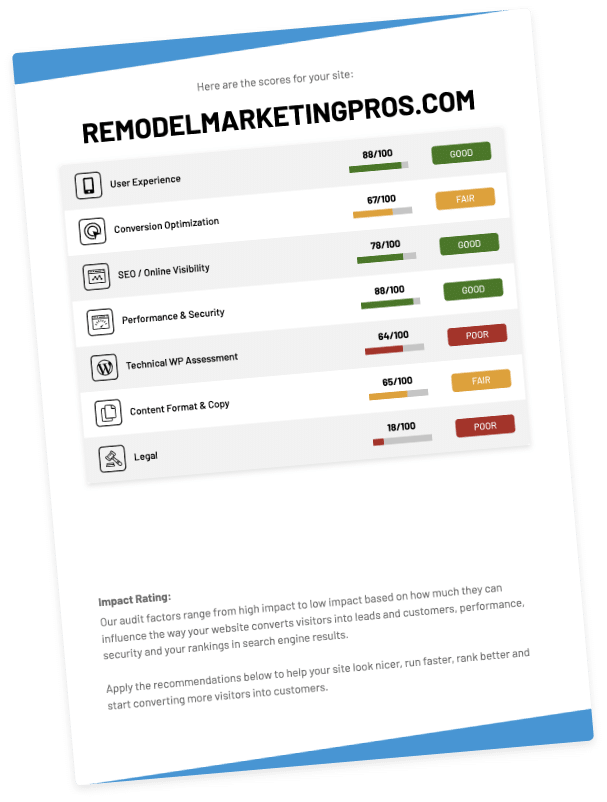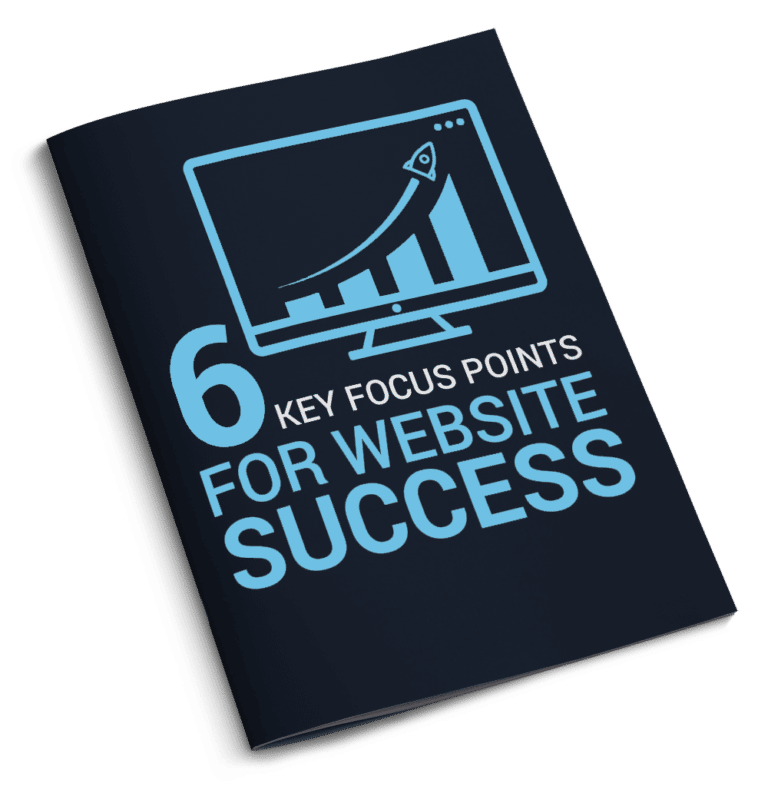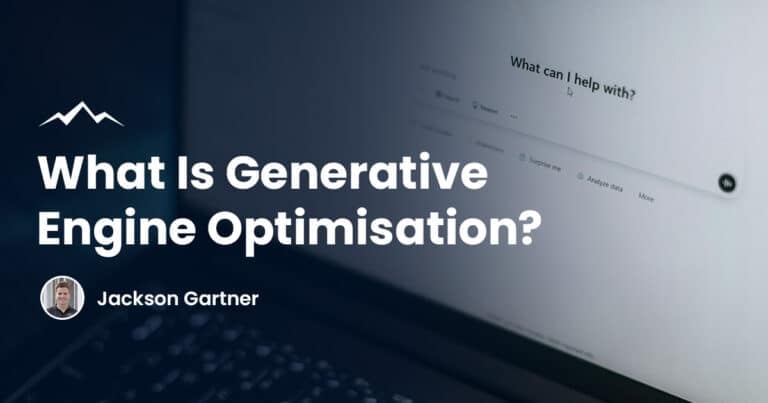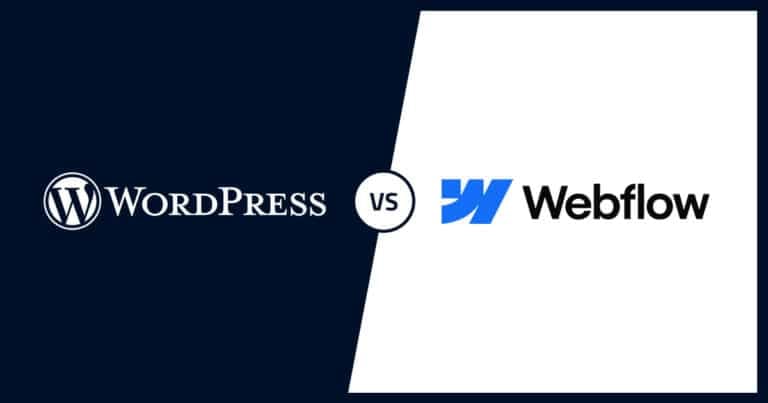Ready to create irresistible content for your new website? Writing compelling copy doesn’t have to be complicated.
With our simple step-by-step guide, you’ll learn how to craft engaging content that effectively communicates your business’s value and resonates with your target audience.
Let’s dive in and get started!
What is Copywriting?
Copywriting is the art of crafting persuasive written content to achieve specific goals, like promoting a product, service or brand.
In the context of website design, copywriting involves creating compelling content for various website elements, such as headlines, product descriptions, blog posts, and calls-to-action.
Effective copywriting can:
- Capture attention: Engaging content draws in your audience.
- Build trust: High-quality content fosters trust between your brand and audience.
- Communicate value: Persuasive copy highlights the benefits of your offerings.
- Inspire action: Compelling calls-to-action guide your audience towards specific actions.
In this article, we’ll guide you through creating amazing website copy, from defining your target audience to editing and optimising your content.
Tip: You can find out how to write a perfect blog post in another article on our website.

7 Easy Steps to Write Great Website Copy
- Define Your Target Audience: Identify key demographics and pain points to create tailored content for your audience, increasing communication effectiveness.
- Craft a Unique Value Proposition: Focus on unique selling points and customer benefits, crafting a concise, specific statement that sets your business apart and resonates with your target audience.
- Plan Your Website’s Structure & Key Pages: Outline your website’s structure, identify pages that need copy, and set content priorities and word count goals to create engaging, purposeful content.
- Write Engaging Headlines: Use concise, strong language, ask questions, highlight benefits, or incorporate numbers to create attention-grabbing headlines that entice readers to explore your content.
- Be Concise: Focus on essential information, use short paragraphs, simple language, and subheadings to create clear, succinct content that effectively communicates your message.
- Edit and Revise: Refine your content for clarity, grammar, and readability, eliminating repetition, and seeking feedback to ensure a polished, professional final product.
- Test and Optimise: Monitor performance metrics, conduct A/B tests, gather user feedback, analyse competitor content, and optimise for SEO to maximise content effectiveness and drive engagement.

The Complete Guide to Writing Website Copy
Define Your Target Audience
Understanding your target audience is crucial to crafting content that resonates with them. Here’s how you can define your target audience effectively:
- Identify demographics: Consider factors such as age, gender, income level, education, and location when defining your target audience. These demographic characteristics can help you create content that appeals to the right people.
- Determine psychographics: Psychographics include your audience’s interests, hobbies, values, and lifestyle choices. Understanding these aspects helps you connect with your audience on a deeper, more personal level.
- Recognise pain points: Understanding your audience’s pain points allows you to create content that addresses their needs and demonstrates how your product or service can solve their problems.
- Create buyer personas: Develop detailed buyer personas that represent different segments of your target audience. These personas can help you tailor your content to each segment’s specific needs and preferences.
- Research your competition: Analyse your competitors’ target audiences and the strategies they use to engage them. This can help you identify potential gaps in the market and opportunities to differentiate your brand.
By thoroughly defining your target audience, you can ensure your website copy is tailored to their needs, preferences, and pain points, ultimately leading to more effective communication and higher conversion rates.
Craft a Unique Value Proposition
A powerful value proposition sets your business apart from the competition and clearly communicates the unique benefits you offer. Here’s how to craft an amazing value proposition:
- Identify your unique selling points: Make a list of the features, benefits, and qualities that differentiate your product or service from your competitors. Focus on aspects that directly address your target audience’s needs and pain points.
- Emphasise customer benefits: Instead of just listing features, highlight the benefits your product or service provides to your customers. Show them how your offering can solve their problems or improve their lives.
- Keep it concise and clear: Your value proposition should be easy to understand and communicate. Aim for a single, concise statement that encapsulates your unique offering and its benefits.
- Make it specific: Avoid using generic or vague terms in your value proposition. Be specific about what sets you apart from the competition and how your product or service benefits your customers.
- Focus on your target audience: Your value proposition should resonate with your target audience and address their unique needs and preferences. Ensure your messaging aligns with their priorities and concerns.
By crafting a unique and compelling value proposition, you’ll be able to communicate the distinct advantages of your business, capture the attention of your target audience, and set the stage for successful conversions.
Plan Your Website Structure
Before diving into writing copy, it’s essential to confirm your website’s sitemap and determine which pages require content.
Sitemap creation is one of the first steps we complete during our Discovery process at White Peak Digital.
Here’s how to approach this step:
- Outline your website’s structure: Create an outline of your website’s structure, including main pages, subpages, and any additional sections. This will help you visualise the overall organisation of your site and ensure all the important information you need to include on your website has a place to live.
- Identify pages that need copy: Review your sitemap and pinpoint the pages that require written content. This may include your home, about, services and blog pages, among others.
- Determine content types: For each page that needs copy, identify the type of content required. This could range from informative text and product descriptions to persuasive calls-to-action and testimonials.
- Prioritise pages: Based on your business goals and target audience’s needs, prioritise the pages that need copy. This will help you allocate your time and resources effectively as you begin writing.
- Set word count goals: Establish approximate word count goals for each page, taking into account the importance of the content and the space available on the page. This will help you create balanced and comprehensive content across your site.
By confirming your website’s sitemap and identifying the pages that need copy, you’ll ensure a well-structured site with engaging and purposeful content tailored to your target audience’s needs.
Write Engaging Headlines
Captivating headlines are essential to draw your audience’s attention and encourage them to read further. Here’s how you can create engaging headlines for each page on your website:
- Keep it short and sweet: Aim for headlines that are concise and to the point. Longer headlines may not display properly on all devices, and shorter headlines are generally easier to comprehend.
- Use strong language: Incorporate powerful action verbs and adjectives to make your headlines more compelling and persuasive. This can help evoke an emotional response and spark interest in your content.
- Ask a question: Pose a question in your headline that your target audience may be asking themselves. This can create curiosity and entice readers to explore the content further for answers.
- Highlight a benefit: Showcase the value or benefit that readers will gain by engaging with your content. This can create a sense of urgency or importance, motivating them to continue reading.
- Use numbers: Incorporate numbers in your headlines, such as “5 Tips” or “10 Strategies.” This can help make your content seem more organised, actionable, and digestible, appealing to your audience’s desire for clear, concise information.
By crafting engaging headlines that grab your audience’s attention, you’ll encourage them to explore your content further, ultimately leading to increased engagement and higher conversion rates.
Be Concise
Writing concise and clear content ensures your message is effectively communicated to your audience. Here’s how to create succinct copy for your website:
- Focus on the essentials: Identify the most critical points you want to convey and make sure they’re clearly presented. Avoid adding unnecessary information that may dilute your message.
- Use short paragraphs: Break your content into shorter paragraphs, usually between 1-3 sentences. This makes your copy easier to read and digest, improving overall readability.
- Employ simple language: Use everyday language that’s easily understood by your target audience. Avoid jargon, technical terms, and complex phrasing that may confuse or alienate readers.
- Trim the fat: Edit your copy thoroughly, cutting out unnecessary words and phrases. Be ruthless in your editing process and focus on maintaining clarity and conciseness.
- Break up text with subheadings: Use subheadings to break your content into smaller, digestible sections. This allows your audience to quickly scan your copy and understand the key takeaways.
By being concise in your website copy, you’ll effectively communicate your message to your audience, improving engagement and increasing the likelihood of conversions.

Edit and Revise
Thorough editing and revision are essential to creating polished and professional website copy. Here’s how to refine your content effectively:
- Check for clarity: Read through your content and ensure that your message is clear and easy to understand. Remove any ambiguity or confusion to improve overall readability.
- Review grammar and punctuation: Carefully check your copy for grammatical errors, spelling mistakes, and punctuation issues. These errors can detract from your credibility and professionalism.
- Eliminate repetition: Look for any repetitive phrases, ideas, or words, and remove or rephrase them as necessary. This will help keep your content concise and engaging.
- Enhance readability: Assess the overall readability of your content, including sentence length, paragraph structure, and word choice. Make adjustments to improve the flow and ensure your copy is easy to digest.
- Seek feedback: Share your draft with colleagues, friends, or family members to gather feedback and suggestions. They may spot errors or offer valuable insights that you might have overlooked.
By editing and revising your website copy thoroughly, you’ll ensure a polished and professional final product that effectively communicates your message and leaves a positive impression on your audience.
Test and Optimise
Continuously testing and optimising your website copy is crucial for maximising its effectiveness after publication. Here’s how to refine your content based on data and user feedback:
- Monitor performance metrics: Use analytics tools to track key metrics related to your content, such as bounce rates, time on page, and conversions. This will help you identify areas that need improvement.
- Conduct A/B tests: Test different versions of your copy to see which performs better. You can experiment with headlines, calls-to-action, or even the overall structure of your content. Use the results to refine and optimise your copy.
- Gather user feedback: Collect feedback from your website visitors through surveys, contact forms, or direct communication. This will provide valuable insights into how your audience perceives your content and areas that may need adjustments.
- Analyse competitor content: Keep an eye on your competitors and examine their website copy. Look for patterns or approaches that appear to be effective and consider implementing similar strategies in your content.
- Optimise for SEO: Review your copy for search engine optimisation (SEO) best practices, such as keyword usage, meta tags, and internal linking. This can help improve your search rankings and drive more traffic to your site.
By regularly testing and optimising your website copy, you’ll ensure that your content remains relevant, engaging, and effective in achieving your business goals.

Frequently Asked Questions
How long should my website copy be?
The ideal length for your website copy depends on your audience, industry, SEO strategy, and the purpose of each page. Focus on conveying your message effectively and concisely while providing valuable information. Avoid unnecessary fluff or overly long content that may lose your audience’s interest.
How often should I update my website copy?
Regularly updating your website copy is essential to keep your content fresh, relevant, and in line with your business goals. Monitor your site’s performance and user feedback to identify areas that need updating. As a general rule, aim to review and update your content at least once a year or whenever significant changes occur in your business or industry.
Should I use industry jargon in my website copy?
Limit the use of industry jargon in your website copy. While it may be appropriate for specific audiences or sections of your site, avoid overusing jargon that may confuse or alienate a broader audience. Focus on using clear and concise language that’s easily understood by your target audience.
How can I improve the readability of my website copy?
To enhance your website copy’s readability, use short paragraphs, simple language, and break up text with subheadings. Additionally, ensure your content has a clear structure and logical flow to make it easy for your audience to follow and digest the information presented.
How important is SEO for my website copy?
SEO is crucial for driving organic traffic to your website and improving its visibility in search engine results. Incorporate SEO best practices, such as keyword research, meta tags, and internal linking, to optimise your website copy and boost your search rankings.
Should I hire a professional copywriter for my website copy?
Hiring a professional copywriter can be beneficial if you lack the time, expertise, or resources to create compelling website copy. A professional copywriter can craft content tailored to your target audience, optimised for SEO, and designed to drive conversions. Consider your budget and business goals when deciding whether to hire a professional.
Wrapping Up
By following these simple steps, you’ll create engaging, persuasive copy for your new website that effectively communicates your business’s value and appeals to your target audience.
If you’re still struggling, consider consulting a professional copywriter or web design agency. They can provide expert guidance, ensuring your website copy is top-notch and delivers the results you desire.
Remember, investing time and effort into perfecting your copy will pay off in the long run.
To your success,
Jackson




